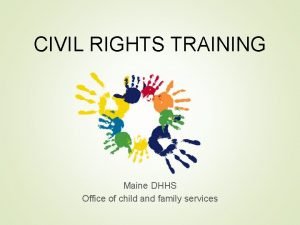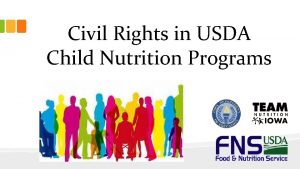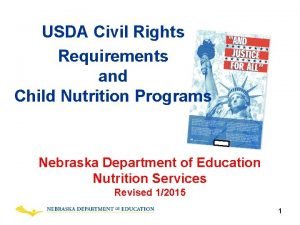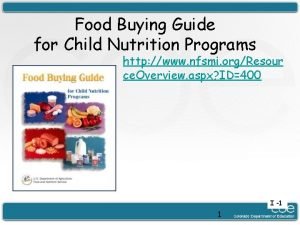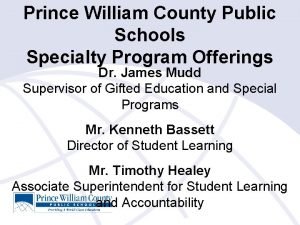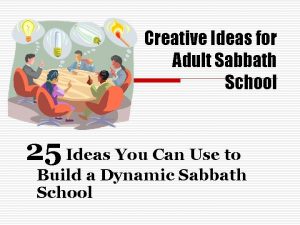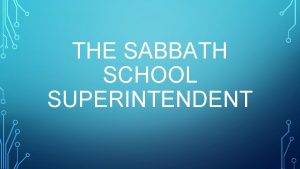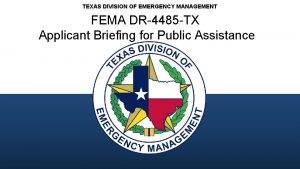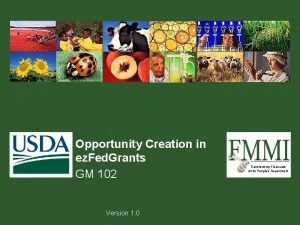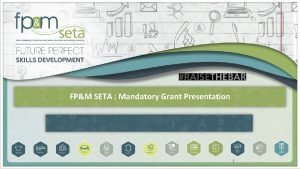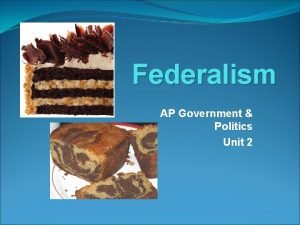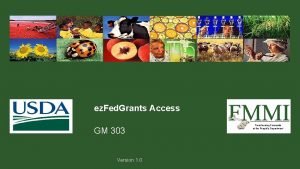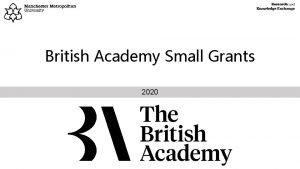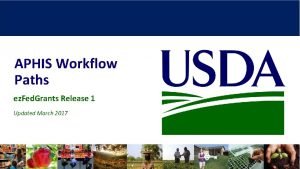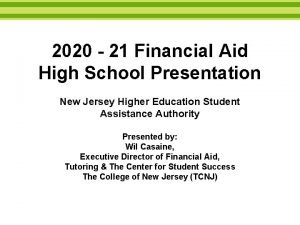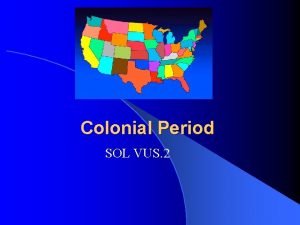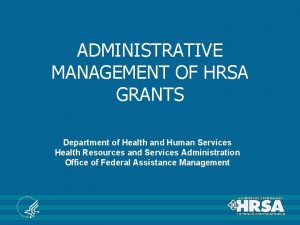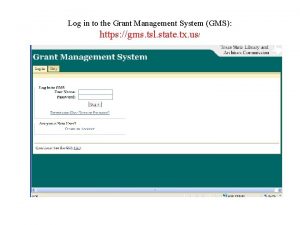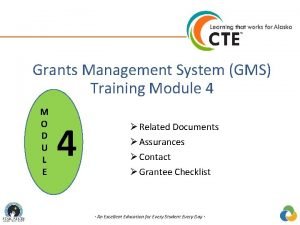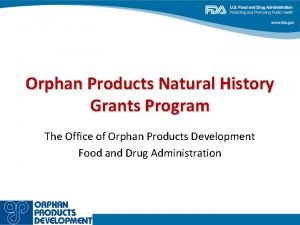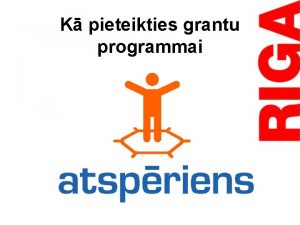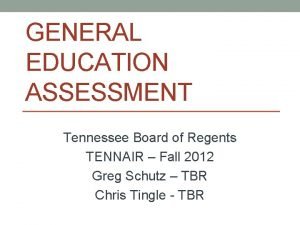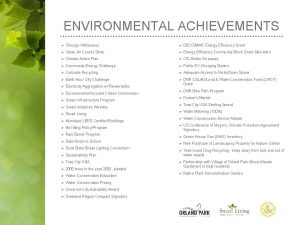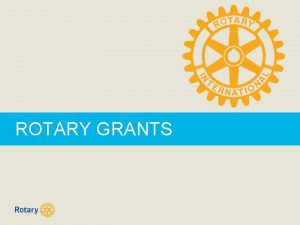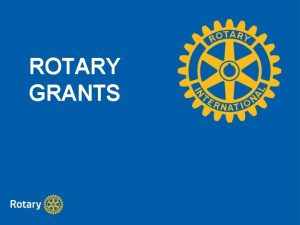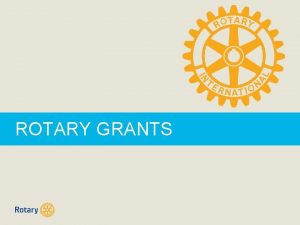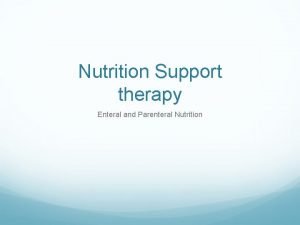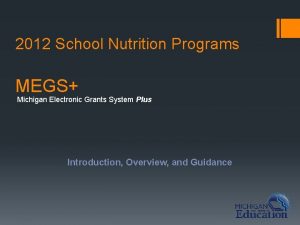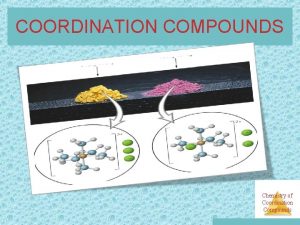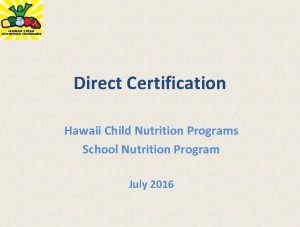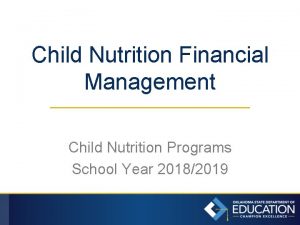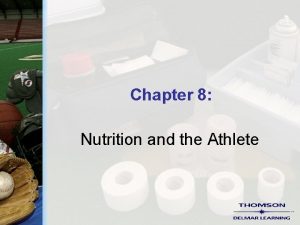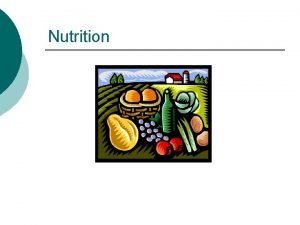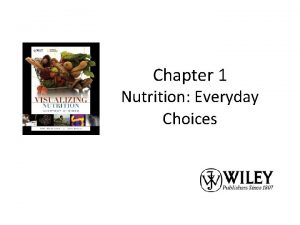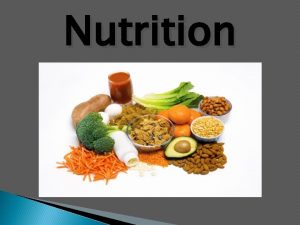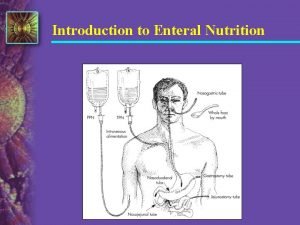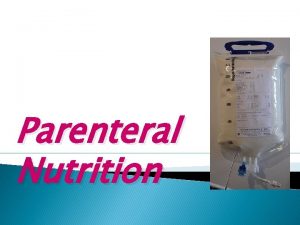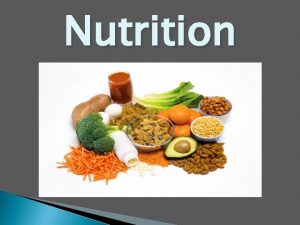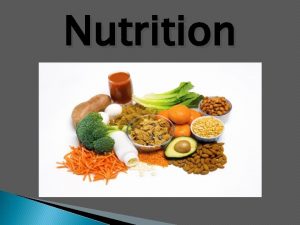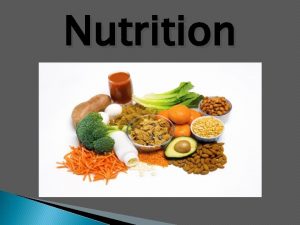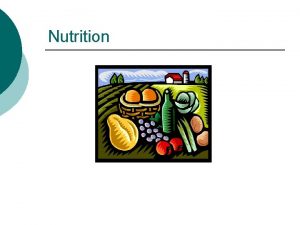Grants Coordination and School Support School Nutrition Programs


























































- Slides: 58

Grants Coordination and School Support School Nutrition Programs 1

§A great place to start §Everything else starts with developing the menu using specific meal pattern guidelines §Correct meal pattern meals are reimbursable, creating a healthy bottom line for the district non-profit food service account 2

1) 2) 3) 4) Food Based Menu Planning - Traditional Food Based Menu Planning - Enhanced Nutrient Standard Menu Planning Assisted Nutrient Standard Menu Planning 5) Alternate Menu Planning Approach 3

The 5 lunch food items are: 1) 2) 3) 4) 5) Meat/Meat Alternate Grains/Breads Juice/Fruit/Vegetable (V/F) Fruit/Vegetable (2 nd Serving)** Milk **Cannot serve two servings of juice or two servings of the same F/V 4

Lunches (food-based) offered to students must contain: §the 5 food items §from 4 different components §in at least the minimum serving sizes for the appropriate age/grade group 5

Traditional §Columns according to age/grade §Indicates minimum serving sizes • 8 oz fluid milk • 1. 5 – 2 oz meat/meat alternate • Total 3/4 C fruit/vegetable • 1 grain/bread daily, 8 -10 weekly 6

Lunches (food based) offered to students must contain: §the 5 food items §from 4 different components §in at least the minimum serving sizes for the appropriate age/grade group 7

The 5 lunch food items are: 1) 2) 3) 4) 5) Meat/Meat Alternate Grains/Breads Juice/Fruit/Vegetable (V/F) Fruit/Vegetable (2 nd Serving)** Milk **Cannot serve two servings of juice or two servings of the same F/V 8

§ Increased F/V for grades K-12 § Increased G/B over the week § Larger F/V serving daily and weekly increase § One G/B serving per day can be a dessert § Grade groupings may be more appropriate, including a grade K-3 allows for smaller servings 9

§ The minimum amount that can count toward the required serving is 8 fluid ounces. § At least two choices should be available § 1% chocolate and fat-free (skim) unflavored § 1% chocolate and 1% unflavored 10

§ Protein can come from many different sources – meats, dairy, eggs, nuts, beans. § No more than 1 ounce of nuts and/or seeds may be credited in any one meal. § Dry beans and peas used in items such as baked beans may count as a Vegetable or Meat Alternate but not as both in the same meal. 11

§ If juice is served to meet one of the requirements, it must be full-strength. § A serving of canned fruit may include the juice or syrup in which the fruit is packed. See the USDA’s Food Buying Guide for Child Nutrition Programs for more information. § You can serve two fruits or two vegetables or one of each, the servings just be can’t be two of the same item (for example, two servings of peaches or tator tots and french fries). 12

§ The item must be whole grain or enriched or made from whole-grain or enriched meal or flour, or bran or germ; or if it is a cereal, the product must be whole grain, enriched or fortified. § Weekly amounts are specified. § For enhanced menu planning, a dessert grain product may be counted for one serving of GB per day. 13

Q) How can a meal provide 5 food Combination Foods at Lunch items from the 4 food components yet feature only 4 food items on the menu? Example: Cheese Pizza Fresh Orange Lettuce Salad Milk 14

Combination foods at lunch are foods containing more than 1 food item. Examples: § Spaghetti with Meat Sauce § Hamburger on Bun § Macaroni and Cheese 15

§A different method of Meal Planning §Focuses on nutrient content of items offered 16

Following are the nutrients analyzed for Nu. Menus: § Calories § Protein § Calcium § Iron § Vitamin A § Vitamin C § Fat - <= 30% calories from fat and < 10% calories from saturated fat 17

Other Nutrients and Dietary Components Analyzed § Cholesterol § Sodium § Dietary Fiber § Carbohydrate While there are no quantity standards set for these dietary components, they must be included in the analysis, except carbohydrate, which is optional. 18

Nu. Menus § When averaged over the school week, lunches must meet the specific age or grade based nutrient standards. The following slides detail the requirements and are included in your handbook. § At a minimum, planned menus must contain 3 menu items. Additional Menu items may need to be added in order to meet nutrient standards and/or to increase variety. 19

§ A minimum of three menu items must be offered: an entrée, milk, and at least one side dish. 1) Offer an Entrée: an entrée is a single food item or a combination of foods served as the main dish. 2) Offer fluid milk as a beverage. 3) Offer at least one side dish; may be any food item except a condiment or a food of minimal nutritional value that is not part of a menu item. 20

21

Monday Tuesday 1 Wednesday 2 Thursday 3 Spaghetti with Meat Sauce Pancakes Pepperoni Pizza Bread Stick Scrambled Eggs Fresh Broccoli Buds Friday 4 Veggie Stir Fry w/White Beans 5 Hamburger on Brown Rice Whole Grain Bun Seasoned Green Beans Hashbrown Patty Petite Banana Chilled Peaches Sweet Potato Fries Fresh Grapes Baked Apple Slices Milk* Fresh Pear Milk* * Variety of fat content 22

Michigan Department of Education § #8 – Minimum Fruit Vegetable Portion Sizes and Qualifying Meal Components United States Department of Agriculture § Nutrition Requirements for Fluid Milk - SP_29 - 2011 § Water Availability During National School Lunch Program Meal Service - SP_28 -2011 23

Do the following school lunches have: § less than 5 items § more than 5 items? 24

25

26

27

28

29

§ Food Based Menu Planning – Traditional ü 5 items from 4 components § Food Based Menu Planning – Enhanced ü 5 items from 4 components - additional age grade groups and increased FV and GB requirements. § Nutrient Standard Menu Planning ü 3 items, nutrient based, analyzed on site § Assisted Nutrient Standard Menu Planning ü 3 items, nutrient based, analysis done by others § Alternate Menu Planning Approach 30

31

While the School Breakfast Challenge has ended, it continues to be an important initiative in the state and nation wide. The school breakfast program is vastly underutilized and can contribute to the overall health and learning ability of our children. 32

§ Studies have proven that students who eat breakfast benefit nutritionally and educationally. Eating school breakfast results in increased math and reading scores. § The majority of students who start their day with breakfast say they feel good, are happy, and more alert throughout their school day. § www. michigan. gov/schoolnutrition § click School Breakfast Program under Programs 33

§ Food Based Menu Planning Traditional § Food Based Menu Planning Enhanced § Nutrient Standard Menu Planning § Assisted Nutrient Standard Menu Planning § Alternate Menu Planning Approach 34

You must offer 4 food items in the traditional or enhanced menu planning systems: § Milk § Fruit/Vegetable F/V § Meat/Meat Alternate M/MA AND/OR § Grains/Bread G/B • You can offer 2 M/MA or 2 G/B or one of each. 35

Breakfasts offered to students must contain: § 4 food items; § from 3 or 4 food components; § in at least the minimum serving sizes for the appropriate age/grade group. 36

§ Columns according to age/grade § Indicates minimum serving sizes • 8 oz fluid milk • 1. 5 – 2 oz meat/meat alternate • Total 3/4 C fruit/vegetable • 1 grain/bread daily, 8 -10 weekly § In relation to GB and M/MA, you can select one serving from each of the GB, M/MA, two from one component or an equivalent combination. 37

§ Breakfast rules for Enhanced Food-Based Menu Planning are the same as Traditional Food-Based. § There is an option in the enhanced food-based menu plan for the grade group 7 -12 to offer one additional serving of grains/breads per day. 38

§ Protein can come from many different sources – meats, cheese, yogurt, eggs, nuts, beans. § No more than 1 ounce of nuts and/or seeds may be credited in any one meal. For breakfast this meets the MA requirement. 39

§ If juice is served to meet the total requirement, it must be full-strength. § Dry beans and peas used in an item such as a breakfast burrito may count as a Vegetable or as a Meat Alternate, but not as both in the same meal. § A serving of canned fruit may include the juice or syrup in which the fruit is packed. See the USDA’s Food Buying Guide for Child Nutrition Programs for more information. 40

§ The item must be whole grain or enriched or made from whole-grain or enriched meal or flour, or bran or germ; or if it is a cereal, the product must be whole grain, enriched or fortified. § The minimum allowable serving size that can count toward meeting the required serving is ¼ of a serving. 41

§ The minimum amount that can count toward the required serving is 8 fluid ounces. § At least two choices should be available § 1% chocolate and fat-free (skim) unflavored § 1% chocolate and 1% unflavored § Milk may be consumed as a beverage or on cereal or used in part for each purpose. 42

43

44

Monday Tuesday Wednesday Thursday Friday 1 2 3 4 5 Cheese and Egg Quesadilla w/ Salsa Flavored Yogurt Toasted Ham & Cheese Sandwich Half Baked French Toast and Jam Applesauce Bagel Half with Jelly Pineapple Chunks Orange Juice Milk Dried Fruit Mix Milk Assorted Cereal Milk Orange Wedges Milk* 45

School Breakfast Program Resources § MDE 2008 Memo - Counting Breakfast Time as Instructional Time § MDE 2011 Memo - Outreach to Households on the Availability of the School Breakfast Program § USDA’s Discover School Breakfast Toolkit 46

47

To be eligible to qualify, programs: § Must be eligible to operate NSLP § Purpose is to provide care in afterschool settings § Must include education or enrichment activities in organized, structured, and supervised environment • Must be operated by the school • School facilities do not need to be used 48

§ May seek reimbursement for 1 snack, per child, per day § Children eligible to participate through age 18 § No age limit for mentally or physically impaired individuals § Sites ≥ 50% F/R receive free rate for all children served 49

§ Can only be served after the school day has ended § Eligibility is based on when the scheduled school day ends • Kindergarten program ending at noon and children remain at school under a care program described earlier • Split sessions – after the first session even though there is a later session 50

§ Snacks must meet the meal pattern for snacks. § USDA recommends that schools offer larger portions for older children (ages 13 -18) based on their greater food energy requirements. 51

Schools can start up a program at any time: § Amend CNAP/MEGS+ at any time § Provide sufficient information to MDE to determine eligibility § Documentation that site is located in an area served by a school that is 50% F/R § For all other sites, documentation of F/R eligibility based on F/R snacks claimed 52

• Total snack counts for sites qualifying for area eligibility or meal counts by type for all other sites • Documentation of attendance on a daily basis • Documentation of compliance with meal pattern requirements: menus and production records Sample menus and templates are provided in the manual and on the School Nutrition Programs website www. michigan. gov/schoolnutrition §click Afterschool Snack Program under Programs 53

§ Columns according to age § Indicates minimum serving sizes • 4 - 8 oz fluid milk • ½ – 1 oz meat/meat alternate • Total ½ - ¾ C fruit/vegetable • 1 grain/bread § 2 of the 4 components must be served § Juice may not be served when milk is the only other component 54

§How does it count in the NSLP? §Create 2 day menu from the items in the list or use your own items! 55

§ Menu Planner for Healthy School Meals § Food Buying Guide for Child Nutrition Programs 56

Much of the information contained in this presentation is available online at: http: //www. fns. usda. gov/cnd/menu. pl anning. NSLP. htm 57

§ Contact MDE School Nutrition Programs at: Phone: 517 -373 -3347 or E-mail: MDE-School. Nutrition@michigan. gov 58
 Coordination isomerism in coordination compounds
Coordination isomerism in coordination compounds Overview of software engineering
Overview of software engineering Civil rights training child nutrition programs
Civil rights training child nutrition programs Civil rights in child nutrition programs
Civil rights in child nutrition programs Civil rights in child nutrition programs
Civil rights in child nutrition programs Food buying guide for child nutrition programs
Food buying guide for child nutrition programs What are prerequisite programs for a haccp program
What are prerequisite programs for a haccp program Enteral parenteral beslenme
Enteral parenteral beslenme Word signals
Word signals Noaa grants management division
Noaa grants management division Lcif coordinator
Lcif coordinator How did land grants and new roads affect brazil?
How did land grants and new roads affect brazil? Nutrition sport
Nutrition sport Sabbath school programs for superintendent
Sabbath school programs for superintendent Prince william county public schools specialty programs
Prince william county public schools specialty programs 25 creative ideas for sabbath school
25 creative ideas for sabbath school Sabbath school superintendent
Sabbath school superintendent Wellington high school choice programs
Wellington high school choice programs Tdem grants management system
Tdem grants management system Ez fed grants
Ez fed grants Grants online noaa
Grants online noaa Grants ap gov
Grants ap gov Emd serono grant portal
Emd serono grant portal Grants portal uga
Grants portal uga Seta grants
Seta grants Grants ap gov
Grants ap gov Ez fed grants
Ez fed grants Ba flexigrant
Ba flexigrant Arts council national lottery project grants
Arts council national lottery project grants Ezfed
Ezfed Grants ap gov
Grants ap gov Iu grad grants
Iu grad grants Hesaa njfams
Hesaa njfams Dep environmental education grants
Dep environmental education grants English nobility who received large land grants
English nobility who received large land grants Hrsa capital grants
Hrsa capital grants Ba/leverhulme small research grants
Ba/leverhulme small research grants Oracle grants management
Oracle grants management Grants management system gms
Grants management system gms Grants management system gms
Grants management system gms Usjetaa
Usjetaa Orphan products grants program
Orphan products grants program Grants lick elementary
Grants lick elementary Kas ir grants
Kas ir grants Pcgo://www.pcgo.com
Pcgo://www.pcgo.com Ies grants
Ies grants Equity trustees grants
Equity trustees grants Sql authorization mechanism grants privileges on
Sql authorization mechanism grants privileges on Sql authorization mechanism grants privileges on
Sql authorization mechanism grants privileges on Google ad grants activation guide
Google ad grants activation guide Competency assessment in tennessee
Competency assessment in tennessee Nih payment management system
Nih payment management system Categorical grants
Categorical grants Energy efficiency grants chicago
Energy efficiency grants chicago Digitization in indiana
Digitization in indiana Finnish cultural foundation
Finnish cultural foundation Allstate purple purse curriculum
Allstate purple purse curriculum Intergovernmental grants department
Intergovernmental grants department Uncc grants
Uncc grants


